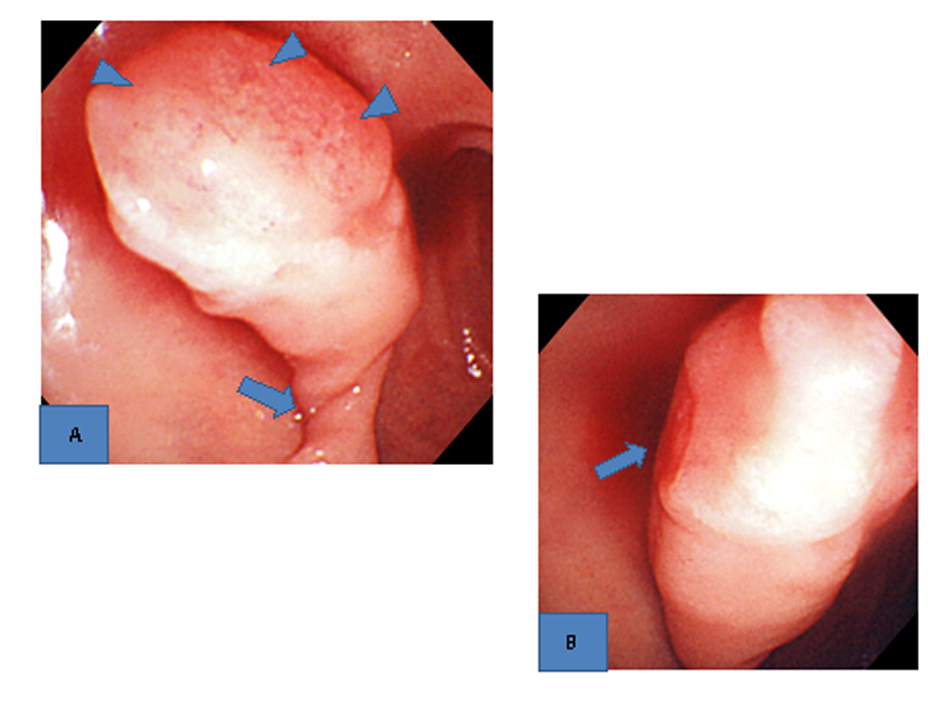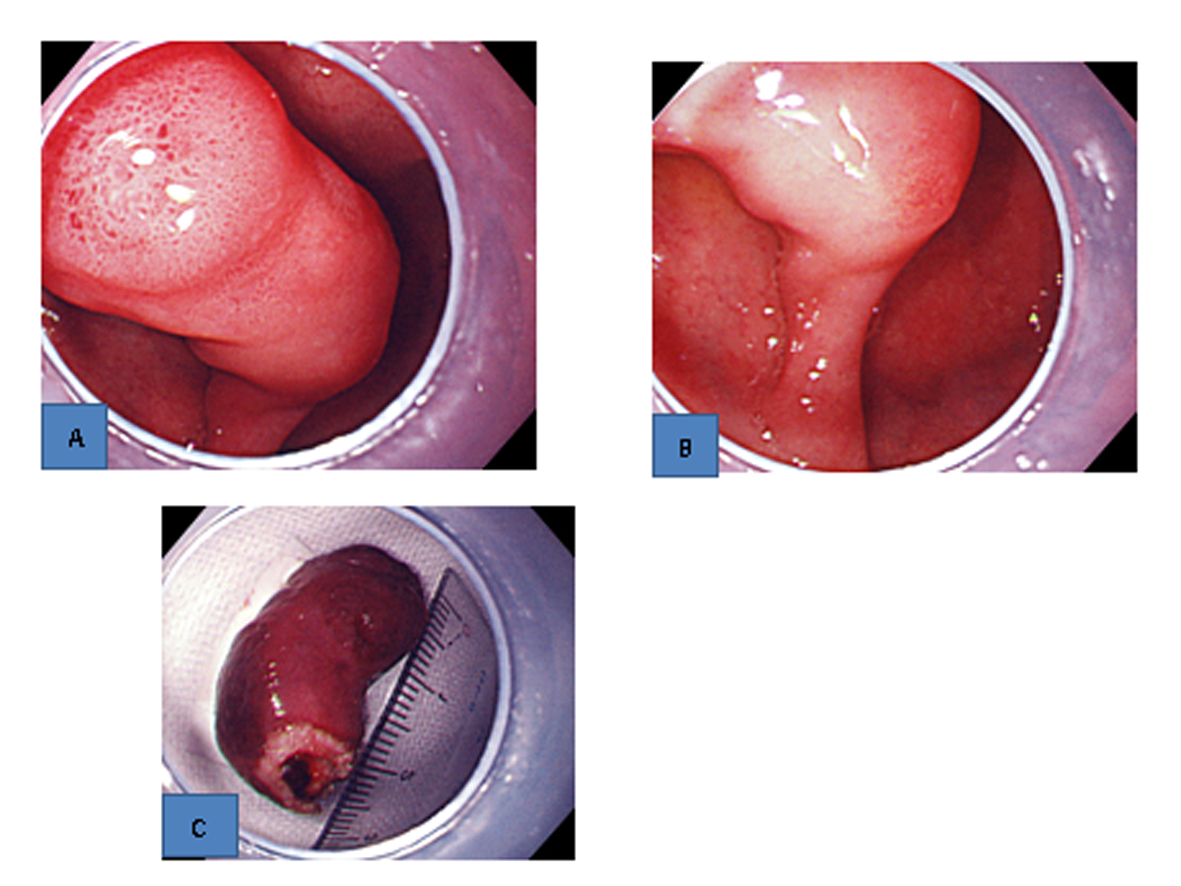
Figure 1. Upper gastrointestinal endoscopic findings. A). A large pedunculated poly with extensive erosions on the top (arrowheads) and a twisted pedicle (arrow) was found in the duodenal bulb. B). Oozing hemorrhage from the erosions on the top was seen (arrow).

